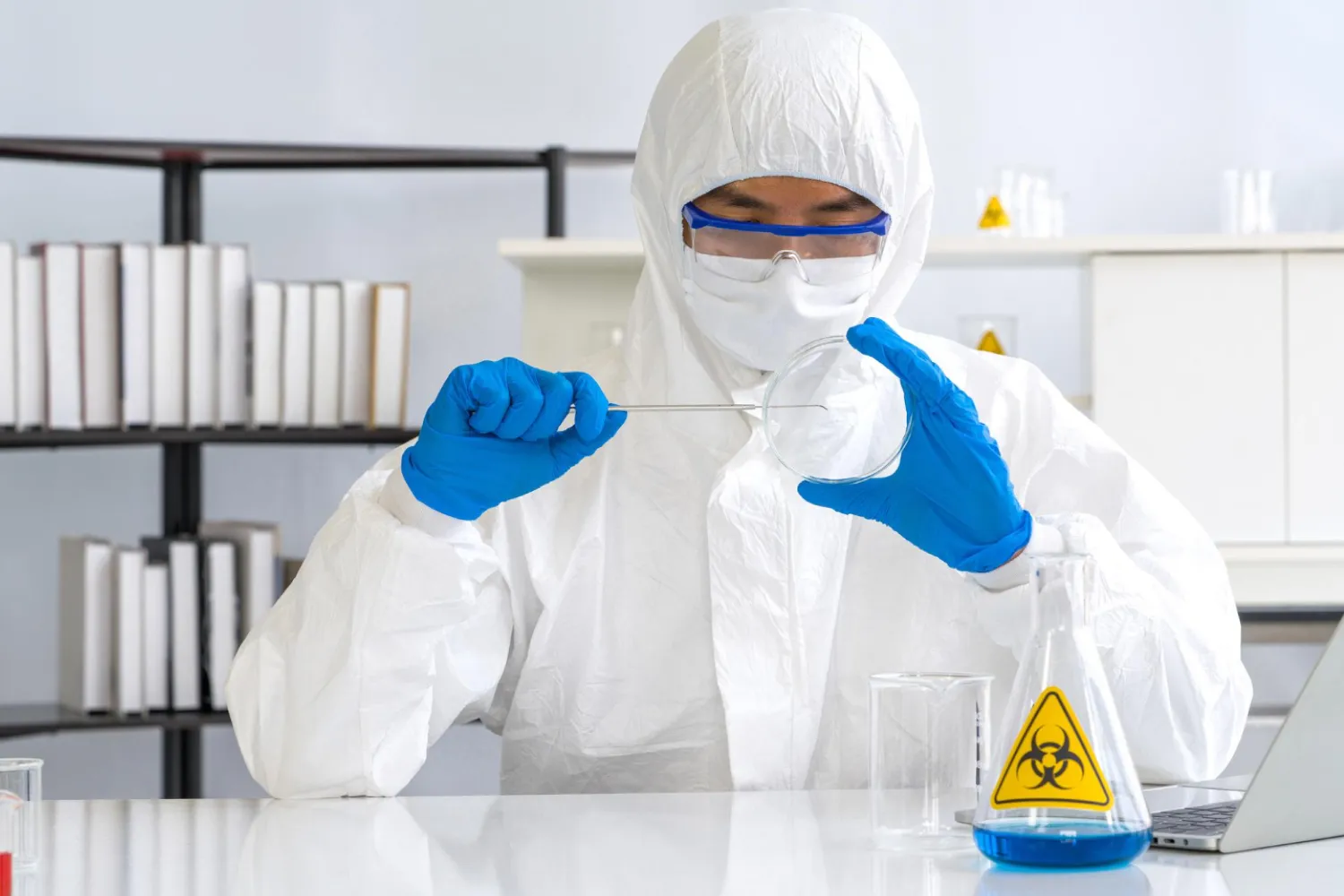10 Common Mistakes in Laboratory Safety and How to Avoid Them
What are the most common safety errors that researchers make in lab settings and how can they be avoided?
Working in a laboratory requires precision in both experiments and safety procedures from handling chemicals to using delicate equipment. However a lot of students and professionals unintentionally make the same safety mistakes that could endanger their research, their coworkers and themselves. Fortunately the majority of these errors are completely avoidable.
Table Of Contents:
- Disregarding PPE (Personal Protective Equipment)
- Ignoring the Protocols for Emergencies
- Working Independently Without Supervision
- Carrying Out Experiments Without Authorization
- Neglecting to Report Incidents and Accidents
- Disregarding the Need to Calibrate Equipment
- Not Performing Risk Assessments
- Incorrect Disposal of Waste
- Disregarding the Instructions for the Equipment
- Incorrect Chemical Handling
- FAQ
Disregarding PPE (Personal Protective Equipment)
Working in the lab without wearing personal protective equipment (PPE) is one of the most frequent and hazardous errors we make. Because they believe the experiment will be brief or take only a minute, many people forgo wearing safety gloves, goggles, face shields and lab coats. But even a minor experiment can lead to infections, poisonous gas inhalation and exposure to dangerous chemicals. Your personal safety, the safety of your coworkers and the safety of the entire lab environment are all at risk when you work without personal protective equipment (PPE).
A guide to avoiding this Mistake:
- Wearing the appropriate PPE before entering the lab is important regardless of the size of the experiment.
- For every experiment basic personal protective equipment (PPE) like lab coats, masks , goggles , gloves and shoe covers are essential.
- When contaminated, used personal protective equipment (PPE) should be handled carefully, thrown away if required and disposed of safely.
- Consider wearing personal protective equipment (PPE) as a life-saving safety measure rather than merely a rule.
Ignoring The Protocols For Emergencies
Because they believe that accidents won’t occur in the lab many people have a tendency to disregard emergency protocols. It is likely that mishaps like fires, chemical spills, electric shocks, toxic gas releases and biological contamination will happen at any time. However workers frequently lack knowledge about where the eye wash station is, how to use a first aid kit, where emergency exits are and how to use a fire extinguisher. Instead of lessening the accident such ignorance and lack of preparation may make it worse.
A guide to avoiding this Mistake:
- Every employee should be aware of the labs emergency exits and where the eye wash station safety shower and fire extinguisher are located.
- Regularly scheduled mock drills and safety training are necessary.
- Everyone should be instructed in safety protocols that outline who to contact in case of an accident who bears responsibility and what should be done initially.
- Our perspective on accidents won’t happen needs to be replaced with one that considers how to deal with an accident if it does happen.
Working Independently Without Supervision
Some people have a tendency to conduct experiments in the lab unsupervised either because they know it all or to save time. However guidance from knowledgeable supervisors is crucial when working with large machinery handling hazardous chemicals or testing biological samples. Unsupervised work can lead to more needless risks and worsen the situation if an accident happens and no one is there to help. This is a serious safety concern particularly for trainees and new hires.
A guide to avoiding this Mistake:
- The use of strong chemicals, high temperatures and pressures and risky experiments should all only be carried out under the supervision of qualified professionals.
- Oversight ought to be required until training is finished.
- A system that guarantees safety protocol + supervision for all experiments should be put in place by lab management.
- A buddy system which involves two people working together should be put in place so that they can react right away if someone needs assistance.
Carrying Out Experiments Without Authorization
Certain individuals in the laboratory carry out experiments without obtaining consent from supervisors and other appropriate authorities. The idea that this is a small experiment or the urge to finish it quickly could be the cause of this carelessness. However unapproved experiments are more likely to disregard safety regulations, misuse dangerous chemicals and result in uncontrollable mishaps. Furthermore because these experiments are not included in the official lab records and results the research loses credibility.
A guide to avoiding this Mistake:
- Before starting any experiment the appropriate supervisors should give their express consent.
- When handling biological samples high-temperature/high-pressure experiments and hazardous chemicals safety procedures should be reviewed beforehand.
- All laboratory experiments ought to be recorded and submitted to the appropriate authorities.
- Everyone should be aware that disobeying safety regulations for the sake of finishing quickly is never acceptable.
Neglecting To Report Incidents And Accidents
Many people fail to report even minor incidents in the lab such as minor leaks, minor equipment damage, minor injuries or hazards. Major accidents may occur in the future if incidents are concealed because it is believed that it is not a big problem and it does not need to be reported. . A minor equipment malfunction can eventually result in a large fire and a minor leak can later spread harmful gases. The identification and fixing of safety system defects may be impeded by failure to report incidents.
A guide to avoiding this mistake:
- Any incident in the lab no matter how minor needs to be reported right away to the supervisor or the safety coordinator.
- In the lab there ought to be a clear procedure for reporting mishaps incidents and equipment failures.
- In order to increase safety it should be made sure that individuals who report incidents won’t be held accountable or punished.
- To help avoid serious mishaps in the future the lab should foster a culture of reporting even if it is small.
Disregarding The Need To Calibrate Equipment
Calibration of all lab equipment including pH meters, pipettes thermometers and scales is crucial. in a consistent manner. However time constraints, negligence or assuming the equipment is working properly are common reasons why researchers avoid calibration. Uncalibrated equipment can result in imprecise measurements and a decline in the dependability of experimental findings. Occasionally this false information can result in risky choices as well as problems with health and safety.
A guide to avoiding this mistake:
- All equipment must be calibrated according to a specified schedule.
- It’s important to keep calibration records up to date and accessible for review.
- Equipment should be halted for inspection and correction right away if it appears to be providing an inaccurate reading.
- A culture of no safety and accuracy without calibration should be established and lab personnel should be made aware of the significance of calibration.
Disregarding The Need To Calibrate Equipment
A significant safety error in lab operations is the failure to evaluate the risk of accidents. I’ve done this before and it won’t happen is a common mindset when beginning an experiment. However a major factor in accidents that go unmanaged is the failure to evaluate the risk of accidents in situations involving new chemicals, new equipment and new protocols. This error jeopardizes the accuracy and dependability of experimental results in addition to personnel safety.
A guide to avoiding this mistake:
- Before beginning any new experiments do a safety risk assessment.
- Write down any possible risks, dangers and safety measures then share them with the team as a whole.
- Establish a standardized procedure for risk assessment in lab operations.
- Develop the mindset that checking twice doesn’t think twice to help prevent accidents.
Incorrect Disposal Of Waste
In the lab improper disposal of chemicals, biological samples, sharps and other hazardous waste is a very common error. Many individuals have a tendency to dispose of waste with the belief that it doesn’t matter because it’s small. . But this is how waste is disposed of. can endanger coworkers and people’s health. can negatively impact the environment. Laws and lab safety procedures may be broken. may make it more difficult to apply safety regulations to other activities.
A guide to avoiding this mistake:
- Use containers with clear labels for all waste including chemicals, biological samples, sharps and calculations.
- Keep chemical biological samples flammable waste and general waste separate and combine them.
- Comply strictly with the waste disposal guidelines set forth by the authorities.
- Lab employees should be taught the value of waste management and encouraged to prioritize safety and the environment.
Disregarding The Instructions For The Equipment
To guarantee accuracy and safety Operating Instructions (SOPs) are continuously being created for every piece of equipment used in the lab. On the other hand a lot of people disregard the equipment instructions because they believe that I know and I have done something before. . Equipment failure and risky operations may result from this. Inaccurate test results and occasionally accidents can result from improperly used equipment.
A guide to avoiding this mistake:
- Before using any piece of equipment carefully read the operating instructions (manual or SOP).
- Know ahead of time how to use the equipment, what order to do it in and what safety measures to take.
- Inform the supervisor right away if you discover that any equipment is being used improperly.
- Following the manual ensures safety and accuracy informs the lab staff.
Incorrect Chemical Handling
Incorrect chemical handling motivated by the belief that it’s small it doesn’t matter or by inexperience can be extremely harmful. Poor management. Heat flammable objects and reactive chemicals can all result in mishaps. The lab will have a contaminated environment. There will be detrimental impacts on coworkers and peoples health. The test results accuracy will be compromised.
A guide to avoiding this mistake:
- All chemicals should be kept in containers with labels.
- Put on the appropriate PPE (mask lab coat goggles and gloves) when handling.
- To learn how to handle chemicals that are reactive or at high temperatures consult the Safety Data Sheet.
- Use barrier techniques to stop chemical spills and leaks right away.
- Encourage people to understand that safe chemical handling is the foundation of lab safety.
FAQ
The PPE needed for the experiments must be worn by every employee entering the lab. Both their own and their coworkers’ safety depend on this.
Notify the safety staff and supervisor right away. Use fire extinguishers, showers and eyewash stations as part of your safety precautions at the scene.
The lab protocol and the timetable provided by the equipment manufacturer should be followed when performing calibration. This guarantees precision and security.

